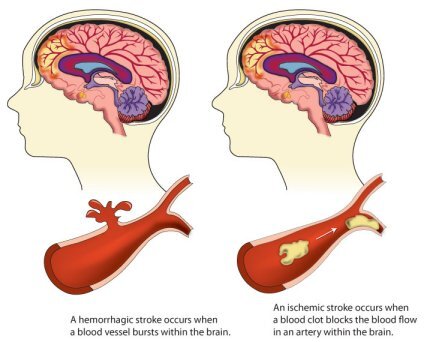
Preventing Stroke: Is it Possible?
By Aayushi Jani – June 6, 2021
Strokes are one of the leading causes of death in the United States. In fact, every 40 seconds, someone in the United States has a stroke, accumulating to 795,000 strokes annually. Yet, when many of us think of detrimental diseases and life-threatening illnesses, we often discount stroke with the perception that it is an adverse event that we have absolutely no control over. However, that is simply untrue. Perpetuating the narrative that stroke is unpreventable is extremely harmful because there are ways that we can gain control over this disease. But first, what is a stroke?
A stroke is essentially when the blood supply to your brain is blocked, disallowing oxygen and other nutrients from reaching the brain tissue. When this occurs, there are only minutes before that brain tissue begins to permanently die. There are two types of stroke: ischemic stroke, which is caused when an artery is blocked, and hemorrhagic stroke, which is a brain bleed. Both of these strokes are extremely dangerous and require immediate medical attention.
“Types of Stroke.” CDC [Digital Image], 31 January 2020, Retrieved from https://images.app.goo.gl/eb1FRdgmD6jqFaWs6, accessed May 2021
There are multiple factors that influence the risk of stroke. The uncontrollable risk factors include race, older age, gender (higher likelihood in men), and genetics. The controllable risk factors, ones that are influenced by our lifestyle, include high blood pressure, smoking, heart disease, drinking alcohol, and obesity.
While we cannot change our race or gender, we can get control over our lifestyle and make changes accordingly. Here are the changes that we should make to manage the controllable factors of stroke.
Exercise
Exercise is absolutely necessary, not only in preventing stroke, but also in maintaining an overall healthy lifestyle. In fact, according to a study by the Lawson Health Research Institute, those who had high levels of fitness had a 68% lower risk of stroke and death compared to those who had low levels of fitness as exercise decreases obesity and combats diabetes and hypertension.
Reduce Alcohol Consumption
Alcohol has been shown to increase the risk of stroke for a multitude of reasons. As alcohol is high in calories, it contributes to obesity. Alcohol also changes the way your body responds, such as your body’s response to insulin, which can lead to diabetes. Additionally, alcohol inhibits the liver from creating anti-clotting factors, which can lead to hemorrhagic stroke. As a result, Mayo Clinic finds that a moderate amount of alcohol that reduces the risk of ischemic stroke is up to one drink per day for women and two drinks per day for men.
Reduce Smoking
Smoking has been shown to double the risk of stroke as cigarette smoke reduces HDL levels (good cholesterol) and increases LDL levels (bad cholesterol). High cholesterol increases the risk of blood clots, which can lead to stroke. In addition, carbon monoxide and nicotine reduce blood oxygenation and increase blood pressure, both of which increase the risk of stroke.
Management of Heart Conditions
Heart conditions, like atrial fibrillation, have a high chance of leading to stroke as it causes blood clots. As atrial fibrillation is one of the leading causes of stroke, it is necessary that if you suspect any irregularities with your heart, you talk to your primary care physician to confirm and get started on treatment. Management of such a heart condition is vital in ensuring that your risk for stroke remains low.
While one can reduce the risk of stroke, there is no formula to completely reduce the risk to zero. If you are experiencing a stroke, it is important that you are aware of the warning signs of a stroke, represented by the acronym FASTER.
F- Face: Facial drooping or numbness on one side
A- Arms: One arm being weak/numb compared to the other
S- Stability: Difficulty maintaining balance and coordination on feet
T- Talking: Slurring or garbled speech as well as the use of nonsensical words
E- Eyes: Loss of vision in one or both eyes or double vision
R- React: Call 911 immediately if you notice any of these warning signs
If you are having a stroke, it is vital that you receive immediate medical attention to reduce the risk of long-term neurological effects. It is completely understandable that you feel that the topic of strokes and permanent neurological damage may be daunting. However, it is necessary that we are aware of everything we can do to prevent them. While it may initially seem difficult to do so, it is important that we understand why and how we should make changes in our lives so that we can be as healthy as possible.

